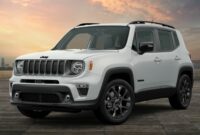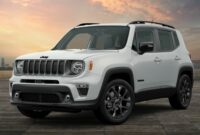Us Postal Jeep For Sale: Your Comprehensive Guide to Owning a Piece of Americana sale.truckstrend.com
Introduction: The Unmistakable Charm of the US Postal Jeep
The sight of a compact, right-hand drive (RHD) vehicle, often with a distinctive sliding door, conjures images of mail carriers diligently delivering letters across suburban streets and rural routes. This iconic workhorse, known affectionately as the US Postal Jeep, specifically the DJ-5 series, is more than just a utilitarian vehicle; it’s a nostalgic symbol of a bygone era and a fascinating piece of American automotive history. Once the backbone of the United States Postal Service (USPS) fleet for decades, these robust and quirky Jeeps have now found a second life in the civilian market.
Us Postal Jeep For Sale: Your Comprehensive Guide to Owning a Piece of Americana
For enthusiasts, collectors, or anyone seeking a truly unique vehicle, a US Postal Jeep for sale presents an intriguing proposition. From its distinctive RHD configuration to its rugged simplicity, the Postal Jeep offers a blend of novelty, practicality, and a canvas for endless customization. This comprehensive guide will delve into everything you need to know about these special vehicles, from their history and unique appeal to what to look for when buying one, where to find them, and how to maintain or restore them. Embark on a journey to discover why owning a US Postal Jeep might be your next great adventure.
The Enduring Legacy: A Brief History of the Postal Jeep (DJ-5 Series)
The story of the US Postal Jeep begins in the mid-1960s when Kaiser-Jeep, and later American Motors Corporation (AMC) and AM General, began producing a two-wheel-drive (2WD) variant of the CJ-5, specifically for the USPS. This model, designated the DJ-5 (Dispatcher Jeep), was designed to meet the rigorous demands of daily mail delivery, prioritizing reliability, maneuverability, and cost-effectiveness.
Key Generations and Features:
- DJ-5 (1965-1970): The original, often powered by the Hurricane 4-cylinder engine.
- DJ-5A/B (1971-1972): Introduced the AMC 232 cubic inch (3.8L) inline-six engine, offering more power.
- DJ-5C/D/E (1973-1978): Saw various iterations, including the AMC 258 cubic inch (4.2L) inline-six and, notably, the "Electric Jeep" DJ-5E, a short-lived electric variant.
- DJ-5F/G (1979-1984): The final production runs, with some later models featuring the General Motors Iron Duke 2.5L 4-cylinder engine, as AM General shifted away from AMC engines.

Throughout its production, the DJ-5 series maintained its defining characteristics: a compact size, a lightweight body (often fiberglass or aluminum on later models to combat rust), sliding doors for easy entry and exit, and, crucially, a right-hand drive configuration tailored for curbside delivery. These Jeeps were built for purpose, with minimal creature comforts, making them remarkably simple and robust machines that have stood the test of time. After decades of faithful service, many were retired and sold to the public, opening up a unique segment of the used vehicle market.
Why Buy a US Postal Jeep? Unique Appeal and Practicality
Owning a US Postal Jeep goes beyond mere transportation; it’s about embracing a distinctive vehicle with a story. Here are several compelling reasons why these quirky Jeeps continue to capture imaginations:
- Nostalgia and Collectibility: For many, the Postal Jeep evokes a sense of Americana and simpler times. It’s a genuine piece of history that stands out in any crowd, making it a fantastic collector’s item and a conversation starter wherever it goes.
- Unique Aesthetic: Its compact size, upright stance, and distinctive RHD layout give it an instantly recognizable and charming appearance that modern vehicles simply can’t replicate. It’s a vehicle with character.
- Customization Platform: The DJ-5’s simple, rugged architecture makes it an ideal candidate for customization. Owners transform them into off-road monsters (with 4×4 conversions), unique street rods, vintage-style cruisers, or even modern electric vehicles. Its utilitarian roots lend themselves well to creative modifications.
- Practicality for Specific Uses: While not a highway cruiser, its small footprint and excellent maneuverability make it perfect for urban driving, short commutes, or even as a unique delivery vehicle for small businesses. The RHD is, of course, ideal for tasks requiring curbside access, such as rural mail delivery (privately contracted) or newspaper routes.
- Relatively Simple Mechanics: Older DJ-5s often share mechanical components with other AMC/Jeep models of their era, making parts somewhat accessible and repairs often straightforward for a mechanically inclined individual or a classic car mechanic.
What to Look For When Buying a Postal Jeep: A Buyer’s Guide
Acquiring a US Postal Jeep for sale requires careful consideration, as many have led tough lives. Here’s a detailed guide on what to inspect before making a purchase:
- Rust, Rust, Rust: This is the single most critical factor. Postal Jeeps were often subjected to harsh weather and neglected maintenance.
- Common Rust Areas: Frame rails (especially near body mounts), floorboards (driver and passenger side), rocker panels, rear cargo area, front fenders, and the cowl.
- Inspection Tip: Bring a flashlight and a magnet. Check under carpets and look for patches or shoddy repairs. Excessive rust can quickly turn a bargain into an expensive nightmare.
- Engine Condition:
- Identify the Engine: Hurricane 4-cylinder, AMC 232/258 I6, or GM Iron Duke 2.5L I4.
- Check for Leaks: Oil, coolant, transmission fluid.
- Listen for Noises: Tapping, knocking, excessive smoke from the exhaust (blue for oil, white for coolant, black for rich fuel mixture).
- Test Drive: Ensure it starts easily, idles smoothly, and has adequate power. Check oil pressure.
- Transmission: Most DJ-5s came with automatic transmissions (TorqueFlite 727 or 904).
- Shifting: Should shift smoothly through all gears without hesitation or harshness.
- Fluid: Check fluid level and condition (should be red, not brown or burnt).
- Steering and Suspension:
- Steering Play: Excessive looseness in the steering wheel indicates worn steering components (tie rods, drag link, steering box).
- Suspension: Listen for squeaks or clunks. Check shocks, springs, and bushings for wear.
- Brakes:
- Most DJs have drum brakes all around. Ensure they feel firm and stop the vehicle effectively without pulling to one side. Check for leaks at wheel cylinders.
- Electrical System:
- Test all lights (headlights, tail lights, turn signals), wipers, horn, and gauges. Given their age, wiring can be brittle or suffer from poor connections.
- Right-Hand Drive (RHD) Specifics:
- Familiarize yourself with the RHD layout. Check the condition of the steering column, pedals, and shifter, as these are specific to the RHD configuration.
- Body and Interior:
- Sliding Doors: Ensure they slide smoothly and latch securely. Often, the tracks are worn or damaged.
- Seats: Original seats are often torn or worn out. Factor in replacement or reupholstering costs.
- Glass: Check for cracks or chips in the windshield and windows.
- Body Panels: Look for dents, previous accident damage, or poor bodywork. Later models had fiberglass bodies, which are rust-resistant but can suffer from cracking or delamination.
- Documentation:
- Ensure the vehicle has a clear title and that the VIN on the title matches the VIN on the vehicle. This is crucial for registration.
Where to Find US Postal Jeeps for Sale
The hunt for a US Postal Jeep can be an adventure in itself. While they’re not as common as mainstream used cars, several avenues can lead you to your next unique ride:
- Online Marketplaces:
- eBay Motors: Often has a selection, ranging from project vehicles to restored examples.
- Facebook Marketplace/Groups: Numerous classic Jeep or postal vehicle groups exist where members buy, sell, and trade. This is an excellent resource for community knowledge as well.
- Craigslist: Local listings can sometimes yield good finds, especially from private sellers.
- Classic Car Classifieds:
- Hemmings Motor News: While more focused on higher-end classics, you might occasionally find a well-preserved DJ-5.
- Bring a Trailer (BaT): Occasionally features highly original or professionally restored examples, which typically fetch premium prices.
- Specialty Jeep Forums and Clubs: Online communities dedicated to vintage Jeeps (e.g., CJ-2A, CJ-5 forums) sometimes have classified sections. Local Jeep clubs can also be a source through word-of-mouth.
- Government Surplus Auctions: While rarer now, the USPS periodically auctions off retired vehicles. Keep an eye on websites like GovPlanet or local government auction sites.
- Local Auto Auctions/Dealers: Some smaller, independent used car dealers or auction houses specializing in fleet vehicles might occasionally have a Postal Jeep.
- Word of Mouth/Barn Finds: Sometimes, the best finds come from unexpected places. Let friends and family know you’re looking.
Restoration, Customization, and Maintenance Tips
Once you’ve found your Postal Jeep, the journey truly begins. Whether you aim for a faithful restoration or a wild custom build, here’s what to consider:
- Restoration:
- Bodywork: Rust repair is often the most significant challenge. Be prepared for extensive welding and fabrication, or consider professional body shop services.
- Paint: A fresh coat of the iconic USPS white (or any color of your choice) can dramatically transform the vehicle.
- Engine/Drivetrain Overhaul: Depending on the condition, a full engine rebuild, transmission service, and differential inspection might be necessary.
- Interior: Replace or reupholster seats, replace floor mats, and address any missing interior panels.
- Common Customization Options:
- Engine Swap: Popular upgrades include modern AMC I6s (like the 4.0L from later Wranglers) or small-block Chevy V8s for more power and reliability.
- 4×4 Conversion: While challenging, some enthusiasts convert their 2WD DJ-5s to 4×4 using CJ-5 or CJ-7 components, creating a truly unique off-roader.
- Suspension Upgrades: Lift kits, modern shocks, and spring replacements improve ride quality and capability.
- Brake Upgrades: Disc brake conversions (especially for the front) significantly improve stopping power and safety.
- Comfort Enhancements: Adding air conditioning, better sound insulation, and modern audio systems can make the DJ-5 more enjoyable for daily use.
- Electric Vehicle (EV) Conversion: The DJ-5’s simple chassis and ample under-hood space make it a surprising candidate for EV conversions, blending vintage looks with modern eco-friendliness.
- Maintenance Tips:
- Parts Availability: Mechanical parts (engine, transmission, axles) are often shared with other AMC/Jeep vehicles, making them relatively accessible. Body-specific parts (e.g., sliding door hardware, unique body panels) can be harder to find and might require fabrication or sourcing from specialty suppliers.
- Regular Fluid Changes: Given their age, consistent oil, transmission, and differential fluid changes are crucial.
- Rust Prevention: After any rust repair, apply undercoating and regularly clean the undercarriage to prevent new corrosion.
- Join a Community: Online forums and local Jeep clubs are invaluable resources for advice, troubleshooting, and sourcing parts.
Price Table: US Postal Jeep For Sale (Estimated Ranges)
Prices for US Postal Jeeps vary significantly based on condition, model year, engine, and location. This table provides estimated ranges:
| Condition Category | Estimated Price Range (USD) | Key Characteristics / Notes |
| :—————– | :————————– | :————————————————————————————————————————————————————————————————————————————————————————————————————————————————————————————————————————————————————————————————————————————————————————————————————————————————————————————————————————————————————————————————————————————————————————————————————————————————————————————————————————————————————————————————————————————————————————————————————————————————————————————————————————————————————————————————————————————————————————————————————————————————————————————————————————————————————————————————————————————————————————————————————————————————————————————————————————————————————————————————————————————————————————————————————————————————————————————————————————————————————————————————————————————————————————————————————————————————————————————————————————————————————————————————————————————————————————————————————————————————————————————————————————————————————————————————————————————————————————————————————————————————————————————————————————————————————————————————————————————————————————————————————————————————————————————————————————————————————————————————————————————————————————————————————————————————————————————————————————————————————————————————————————————————————————————————————————————————————————————————————————————————————————————————————————————————————————————————————————————————————————————————————————————————————————————————————————————————————————————————————————————————————————————————————————————————————————————————————————————————————————————————————————————————————————————————————————————————————————————————————————————————————————————————————————————————————————————————————————————————————————————————————————————————————————————————————————————————————————————————————————————————————————————————————————————————————————————————————————————————————————————————————————————————————————————————————————————————————————————————————————————————————————————————————————————————————————————————————————————————————————————————————————————————————————————————————————————————————————————————————————————————————————————————————————————————————————————————————————————————————————————————————————————————————————————————————————————————————————————————————————————————————————————————————————————————————————————————————————————————————————————————————————————————————————————————————————————————————————————————————————————————————————————————————————————————————————————————————————————————————————————————————————————————————————————————————————————————————————————————————————————————————————————————————————————————————————————————————————————————————————————————————————————————————————————————————————————————————————————————————————————————————————————————————————————————————————————————————————————————————————————————————————————————————————————————————————————————————————————————————————————————————————————————————————————————————————————————————————————————————————————————————————————————————————————————————————————————————————————————————————————————————————————————————————————————————————————————————————————————————————————————————————————————————————————————————————————————————————————————————————————————————————————————————————————————————————————————————————————————————————————————————————————————————————————————————————————————————————————————————————————————————————————————————————————————————————————————————————————————————————————————————————————————————————————————————————————————————————————————————————————————————————————————————————————————————————————————————————————————————————————————————————————————————————————————————————————————————————————————————————————————————————————————————————————————————————————————————————————————————————————————————————————————————————————————————————————————————————————————————————————————————————————————————————————————————————————————————————————————————————————————————————————————————————————————————————————————————————————————————————————————————————————————————————————————————————————————————————————————————————————————————————————————————————————————————————————————————————————————————————————————————————————————————————————————————————————————————————————————————————————————————————————————————————————————————————————————————————————————————————————————————————————————————————————————————————————————————————————————————————————————————————————————————————————————————————————————————————————————————————————————————————————————————————————————————————————————————————————————————————————————————————————————————————————————————————————————————————————————————————————————————————————————————————————————————————————————————————————————————————————————————————————————————————————————————————————————————————————————————————————————————————————————————————————————————————————————————————————————————————————————————————————————————————————————————————————————————————————————————————————————————————————————————————————————————————————————————————————————————————————————————————————————————————————————————————————————————————————————————————————————————————————————————————————————————————————————————————————————————————————————————————————————————————————————————————————————————————————————————————————————————————————————————————————————————————————————————————————————————————————————————————————————————————————————————————————————————————————————————————————————————————————————————————————————————————————————————————————————————————————————————————————————————————————————————————————————————————————————————————————————————————————————————————————————————————————————————————————————————————————————————————————————————————————————————————————————————————————————————————————————————————————————————————————————————————————————————————————————————————————————————————————————————————————————————————————————————————————————————————————————————————————————————————————————————————————————————————————————————————————————————————————————————————————————————————————————————————————————————————————————————————————————————————————————————————————————————————————————————————————————————————————————————————————————————————————————————————————————————————————————————————————————————————————————————————————————————————————————————————————————————————————————————————————————————————————————————————————————————————————————————————————————————————————————————————————————————————————————————————————————————————————————————————————————————————————————————————————————————————————————————————————————————————————————————————————————————————————————————————————————————————————————————————————————————————————————————————————————————————————————————————————————————————————————————————————————————————————————————————————————————————————————————————————————————————————————————————————————————————————————————————————————————————————————————————————————————————————————————————————————————————————————————————————————————————————————————————————————————————————————————————————————————————————————————————————————————————————————————————————————————————————————————————————————————————————————————————————————————————————————————————————————————————————————————————————————————————————————————————————————————————————————————————————————————————————————————————————————————————————————————————————————————————————————————————————————————————————————————————————————————————————————————————————————————————————————————————————————————————————————————————————————————————————————————————————————————————————————————————————————————————————————————————————————————————————————————————————————————————————————————————————————————————————————————————————————————————————————————————————————————————————————————————————————————————————————————————————————————————————————————————————————————————————————————————————————————————————————————————————————————————————————————————————————————————————————————————————————————————————————————————————————————————————————————————————————————————————————————————————————————————————————————————————————————————————————————————————————————————————————————————————————————————————————————————————————————————————————————————————————————————————————————————————————————————————————————————————————————————————————————————————————————————————————————————————————————————————————————————————————————————————————————————————————————————————————————————————————————————————————————————————————————————————————————————————————————————————————————————————————————————————————————————————————————————————————————————————————————————————————————————————————————————————————————————————————————————————————————————————————————————————————————————————————————————————————————————————————————————————————————————————————————————————————————————————————————————————————————————————————————————————————————————————————————————————————————————————————————————————————————————————————————————————————————————————————————————————————————————————————————————————————————————————————————————————————————————————————————————————————————————————————————————————————————————————————————————————————————————————————————————————————————————————————————————————————————————————————————————————————————————————————————————————————————————————————————————————————————————————————————————————————————————————————————————————————————————————————————————————————————————————————————————————————————————————————————————————————————————————————————————————————————————————————————————————————————————————————————————————————————————————————————————————————————————————————————————————————————————————————————————————————————————————————————————————————————————————————————————————————————————————————————————————————————————————————————————————————————————————————————————————————————————————————————————————————————————————————————————————————————————————————————————————————————————————————————————————————————————————————————————————————————————————————————————————————————————————————————————————————————————————————————————————————————————————————————————————————————————————————————————————————————————————————————————————————————————————————————————————————————————————————————————————————————————————————————————————————————————————————————————————————————————————————————————————————————————————————————————————————————————————————————————————————————————————————————————————————————————————————————————————————————————————————————————————————————————————————————————————————————————————————————————————————————————————————————————————————————————————————————————————————————————————————————————————————————————————————————————————————————————————————————————————————————————————————————————————————————————————————————————————————————————————————————————————————————————————————————————————————————————————————————————————————————————————————————————————————————————————————————————————————————————————————————————————————————————————————————————————————————————————————————————————————————————————————————————————————————————————————————————————————————————————————————————————————————————————————————————————————————————————————————————————————————————————————————————————————————————————————————————————————————————————————————————————————————————————————————————————————————————————————————————————————————————————————————————————————————————————————————————————————————————————————————————————————————————————————————————————————————————————————————————————————————————————————————————————————————————————————————————————————————————————————————————————————————————————————————————————————————————————————————————————————————————————————————————————————————————————————————————————————————————————————————————————————————————————————————————————————————————————————————————————————————————————————————————————————————————————————————————————————————————————————————————————————————————————————————————————————————————————————————————————————————————————————————————————————————————————————————————————————————————————————————————————————————————————————————————————————————————————————————————————————————————————————————————————————————————————————————————————————————————————————————————————————————————————————————————————————————————————————————————————————————————————————————————————————————————————————————————————————————————————————————————————————————————————————————————————————————————————————————————————————————————————————————————————————————————————————————————————————————————————————————————————————————————————————————————————————————————————————————————————————————————————————————————————————————————————————————————————————————————————————————————————————————————————————————————————————————————————————————————————————————————————————————————————————————————————————————————————————————————————————————————————————————————————————————————————————————————————————————————————————————————————————————————————————————————————————————————————————————————————————————————————————————————————————————————————————————————————————————————————————————————————————————————————————————————————————————————————————————————————————————————————————————————————————————————————————————————————————————————————————————————————————————————————————————————————————————————————————————————————————————————————————————————————————————————————————————————————————————————————————————————————————————————————————————————————————————————————————————————————————————————————————————————————————————————————————————————————————————————————————————————————————————————————————————————————————————————————————————————————————————————————————————————————————————————————————————————————————————————————————————————————————————————————————————————————————————————————————————————————————————————————————————————————————————————————————————————————————————————————————————————————————————————————————————————————————————————————————————————————————————————————————————————————————————————————————————————————————————————————————————————————————————————————————————————————————————————————————————————————————————————————————————————————————————————————————————————————————————————————————————————————————————————————————————————————————————————————————————————————————————————————————————————————————————————————————————————————————————————————————————————————————————————————————————————————————————————————————————————————————————————————————————————————————————————————————————————————————————————————————————————————————————————————————————————————————————————————————————————————————————————————————————————————————————————————————————————————————————————————————————————————————————————————————————————————————————————————————————————————————————————————————————————————————————————————————————————————————————————————————————————————————————————————————————————————————————————————————————————————————————————————————————————————————————————————————————————————————————————————————————————————————————————————————————————————————————————————————————————————————————————————————————————————————————————————————————————————————————————————————————————————————————————————————————————————————————————————————————————————————————————————————————————————————————————————————————————————————————————————————————————————————————————————————————————————————————————————————————————————————————————————————————————————————————————————————————————————————————————————————————————————————————————————————————————————————————————————————————————————————————————————————————————————————————————————————————————————————————————————————————————————————————————————————————————————————————————————————————————————————————————————————————————————————————————————————————————————————————————————————————————————————————————————————————————————————————————————————————————————————————————————————————————————————————————————————————————————————————————————————————————————————————————————————————————————————————————————————————————————————————————————————————————————————————————————————————————————————————————————————————————————————————————————————————————————————————————————————————————————————————————————————————————————————————————————————————————————————————————————————————————————————————————————————————————————————————————————————————————————————————————————————————————————————————————————————————————————————————————————————————————————————————————————————————————————————————————————————————————————————————————————————————————————————————————————————————————————————————————————————————————————————————————————————————————————————————————————————————————————————————————————————————————————————————————————————————————————————————————————————————————————————————————————————————————————————————————————————————————————————————————————————————————————————————————————————————————————————————————————————————————————————————————————————————————————————————————————————————————————————————————————————————————————————————————————————————————————————————————————————————————————————————————————————————————————————————————————————————————————————————————————————————————————————————————————————————————————————————————————————————————————————————————————————————————————————————————————————————————————————————————————————————————————————————————————————————————————————————————————————————————————————————————————————-## Us Postal Jeep For Sale: A Comprehensive Guide to an American Icon
The familiar sight of a bright white, compact right-hand-drive vehicle delivering mail across countless American neighborhoods is etched into the collective memory of generations. This isn’t just any vehicle; it’s the US Postal Jeep, specifically the DJ-5 series, a utilitarian marvel that served the United States Postal Service (USPS) faithfully for decades. Today, these iconic vehicles are no longer confined to postal routes; they represent a unique segment of the classic vehicle market, offering a blend of nostalgia, distinctiveness, and surprising versatility for those looking for a "Us Postal Jeep For Sale."
This comprehensive guide will explore everything a prospective owner needs to know about acquiring one of these pieces of American automotive history. From understanding their legacy to practical advice on purchasing, restoring, and maintaining them, we’ll cover the essential details to help you navigate the world of Us Postal Jeep For Sale.
The Enduring Legacy: A Brief History of the US Postal Jeep (DJ-5 Series)
The story of the US Postal Jeep began in the mid-1960s. The USPS needed a durable, economical, and maneuverable vehicle capable of handling the demanding stop-and-go nature of mail delivery. Kaiser-Jeep, the original manufacturer, adapted its popular civilian CJ-5 model into a two-wheel-drive (2WD) variant specifically for this purpose, dubbing it the DJ-5 (Dispatcher Jeep).
Over the years, production transitioned from Kaiser-Jeep to American Motors Corporation (AMC), and finally to AM General. Each transition brought minor updates and different engine options:
- DJ-5 (1965-1970): Early models often featured the Hurricane 4-cylinder engine, known for its reliability but modest power.
- DJ-5A/B (1971-1972): Introduced the more robust AMC 232 cubic inch (3.8L) inline-six engine, providing better performance for heavier loads and varied terrains.
- DJ-5C/D/E (1973-1978): Continued with the AMC 232/258 cubic inch (4.2L) inline-six engines. The DJ-5E was a notable, albeit short-lived, experimental electric version.
- DJ-5F/G (1979-1984): The final production years saw some models equipped with the General Motors Iron Duke 2.5L 4-cylinder engine, as AM General diversified its engine suppliers.
Despite these variations, the core characteristics remained constant: a compact, often uni-body-like construction (later models used fiberglass bodies to combat rust and reduce weight), signature sliding doors on both sides for easy access, and, most importantly, a right-hand-drive configuration designed for efficient curbside mail delivery. These vehicles were built for function over form, with sparse interiors and robust mechanicals designed to withstand relentless daily use.
When the USPS retired these Jeeps, they were sold to the public, creating a unique niche in the classic vehicle market. Their simple design and rugged nature meant many could still be put to good use, or serve as excellent platforms for restoration and customization.
Why Buy a US Postal Jeep? Unique Appeal and Practicality
For those considering a Us Postal Jeep For Sale, the appeal extends far beyond mere transportation. These vehicles offer a distinctive blend of historical significance, unique aesthetics, and surprising versatility:
- A Slice of Americana: Owning a Postal Jeep is akin


